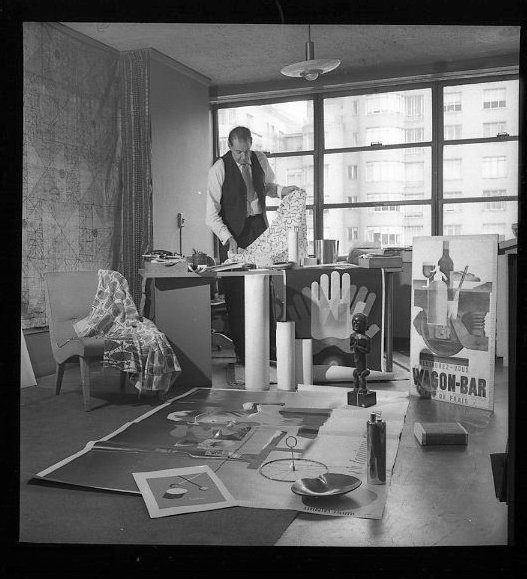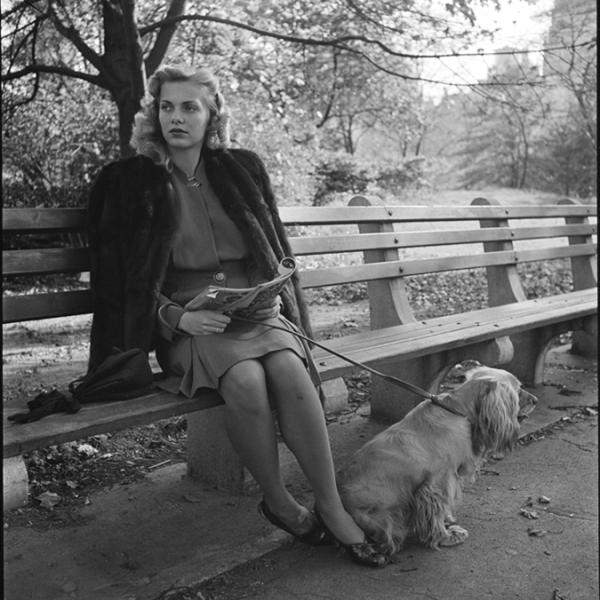Digitizing the Work of John Vachon in the LOOK Magazine Collection
Tuesday, October 9, 2018 by
The Museum happily shared the news in a recent blog post that with support from the National Endowment for the Humanities, the Museum has just embarked on a project to process and describe the Museum’s LOOK magazine collection to the assignment level. We are now delighted to share more exciting news regarding this significant body of work – with support from the Institute of Museum and Library Services (IMLS), the Museum will be working on a project which specifically focuses on the work of photographer John Vachon in the LOOK magazine collection.
John Vachon (1914-1975) made his name working for Roy Stryker (1893-1975) at the Farm Security Administration (FSA) during the Great Depression. When Vachon was first hired at the FSA as an “assistant messenger,” he had no prior photographic experience, but quickly developed an interest in the art form. With tips from notable FSA photographers Ben Shahn, Walker Evans, and future LOOK colleague and Director of Photography Arthur Rothstein, Vachon was sent on his first assignment two years after being hired at the FSA. In this capacity, he was assigned to document the life of the rural poor across America. Vachon again worked with Stryker on the Standard Oil project, developed for the purpose of documenting the effects of oil on everyday life. After a brief stint at LIFE, Vachon began working for LOOK in 1947, where he remained for 25 years, working alongside the ranks of Charlotte Brooks, Weegee, Arthur Rothstein, and Stanley Kubrick – whose work from this collection is currently featured in Through a Different Lens: Stanley Kubrick Photographs.
Carl Fleischhauer, author of Documenting America, 1935-43 (University of California Press, 1988), a text about the FSA photographs, notes that work Vachon executed while employed with the FSA “anticipate[d] the postwar generation of ‘street photographers’,” and “the hallmark of this style of photography is the portrayal of people and places encountered in the street, unembellished by the beautifying contrivances used by calendar and public relations photographers.” Vachon evolved and honed his talents on documentary projects such as the Farm Security Administration that conveyed the bleaker side of life during that time, developing the documentarian’s unique skill for focusing on the individual that was so characteristic to LOOK.
Vachon was a favorite of the LOOK editors due to his long-standing professional relationship with Arthur Rothstein, dating back to their days at the FSA, and was assigned a number of stories that investigated New York City. The 54 assignments selected for inclusion in this project center around a few primary topics, including sports and entertainment, arts and culture, and everyday life in New York City, both in its well-known neighborhoods as well as the less-visited sections of the city. However, interwoven into the subtext of these assignments are underlying societal themes regarding the plight of the less fortunate, women’s issues, the labor movement, civil rights, youth culture, events with national impact or audience, the ever-shifting urban landscape of the city, and New York as the land of opportunity.
Vachon’s profiles also included well-known personalities in arts and literature, such as Pearl S. Buck, Nobel and Pulitzer Prize winning author (1951) of The Good Earth, who was also known for her advocacy of women’s rights and Asian and mixed culture adoption. Other arts assignments feature Rene d’Harnoncourt, a month before his official appointment as Director of the Museum of Modern Art (1949), and a 1952 assignment featuring rehearsals at the Metropolitan Opera House prior to demolition in 1967 and its move to Lincoln Center, providing historical perspective on the dynamic physical landscape of the arts.
The majority of Vachon’s assignments proposed for digitization in this project document everyday life in New York City, but illustrate universal themes. The locations vary from sections and landmarks of the city easily recognized by readers outside of the city, such as Grand Central Terminal, the United Nations Building, and the mansions and luxury apartments of Fifth Avenue. Other assignments led Vachon to less-documented corners of the city, such as Brooklyn, Coney Island, and an Ellis Island home for orphaned immigrant children. Additional assignments focused on Harlem, capturing a vibrant African-American community as it faced the realities of poverty; the Durham family in Brooklyn as they practiced first aid and survival techniques in preparation in the event of an atomic bomb detonation; and women in the workforce.
Additional work from John Vachon is included in both the Farm Securities Administration/ Office of War Information negatives at the Library of Congress, and the Standard Oil collection at the University of Louisville. Making the Vachon work in the Museum’s LOOK Collection accessible will allow scholars to fully study his technical and aesthetic evolution as a photographer. Read the full press release.
The views, findings, conclusions or recommendations expressed in this project do not necessarily represent those of the Institute of Museum and Library Services.








